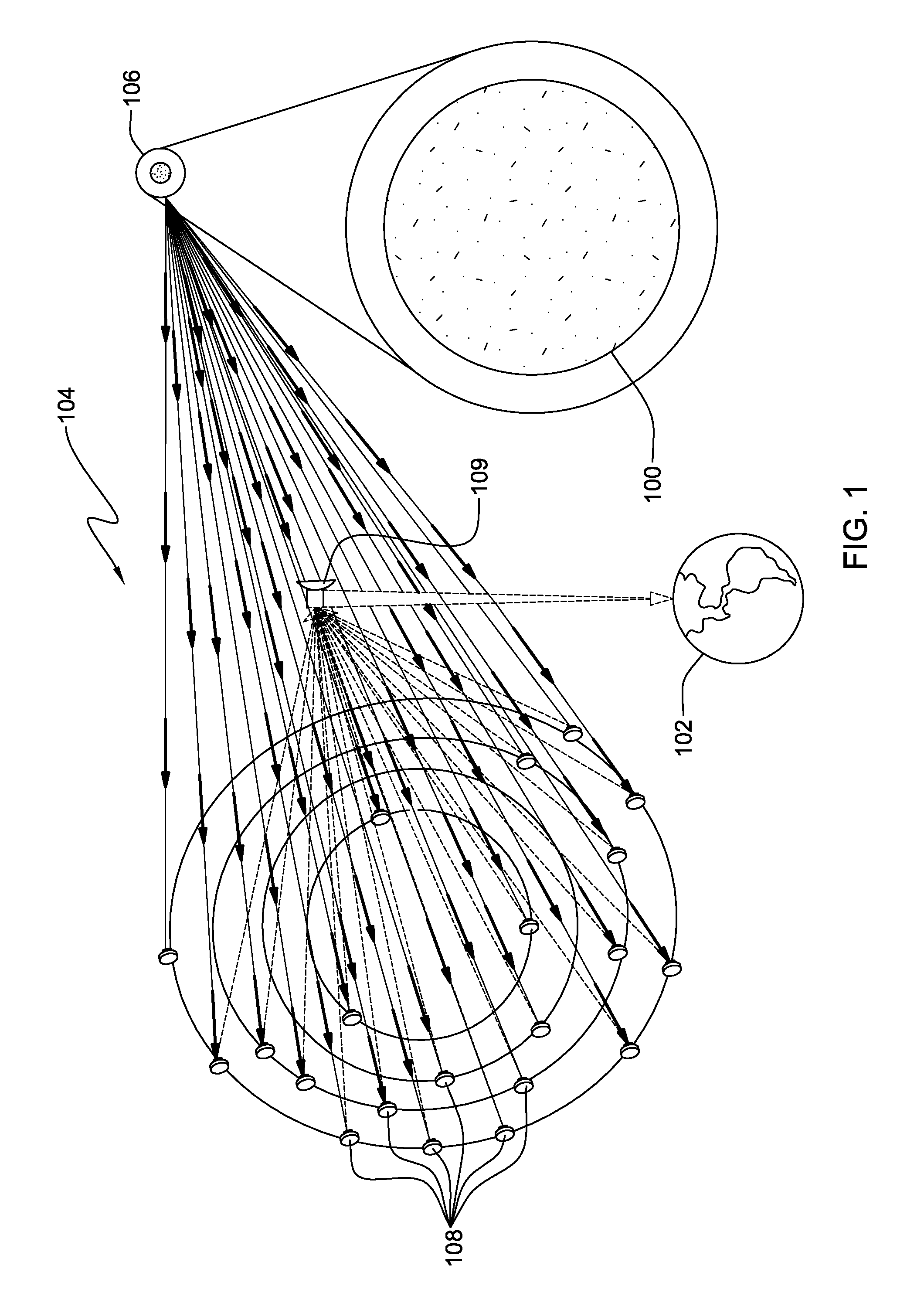Direct solve image based wave-front sensing
a wave-front sensing and image technology, applied in the field of space-based imaging, can solve the problems of degrading the image wave-front, requiring an unacceptably large number of iterations to converge, and requiring a computationally intensive process. to achieve the effect of simplifying the control of articulated mirrors and reducing the wave-front sensing and control tim
- Summary
- Abstract
- Description
- Claims
- Application Information
AI Technical Summary
Benefits of technology
Problems solved by technology
Method used
Image
Examples
Embodiment Construction
[0023]Turning now to the drawings and more particularly FIG. 1 shows an example of a National Aeronautics and Space Administration (NASA) space-based imaging interferometer, e.g., the NASA Stellar Imager (SI). In this example, application of the present invention provides remote onboard wave-front sensing and control to maintain aperture alignment during science observations and after array reconfigurations. SI is an ultraviolet (UV) optical interferometry mission in the NASA Sun-Earth 100, 102 connection, far-horizon roadmap. Such a mission requires both spatial and temporal resolution of stellar magnetic activity patterns 104, representing a broad range of activity level from stars 106. Studying these magnetic activity patterns 104 enables improved forecasting of solar / stellar magnetic activity as well as an improved understanding of the impact of that magnetic activity on planetary climate and astrobiology. SI, for example, may also allow for measuring internal structure and rota...
PUM
 Login to View More
Login to View More Abstract
Description
Claims
Application Information
 Login to View More
Login to View More - R&D
- Intellectual Property
- Life Sciences
- Materials
- Tech Scout
- Unparalleled Data Quality
- Higher Quality Content
- 60% Fewer Hallucinations
Browse by: Latest US Patents, China's latest patents, Technical Efficacy Thesaurus, Application Domain, Technology Topic, Popular Technical Reports.
© 2025 PatSnap. All rights reserved.Legal|Privacy policy|Modern Slavery Act Transparency Statement|Sitemap|About US| Contact US: help@patsnap.com



